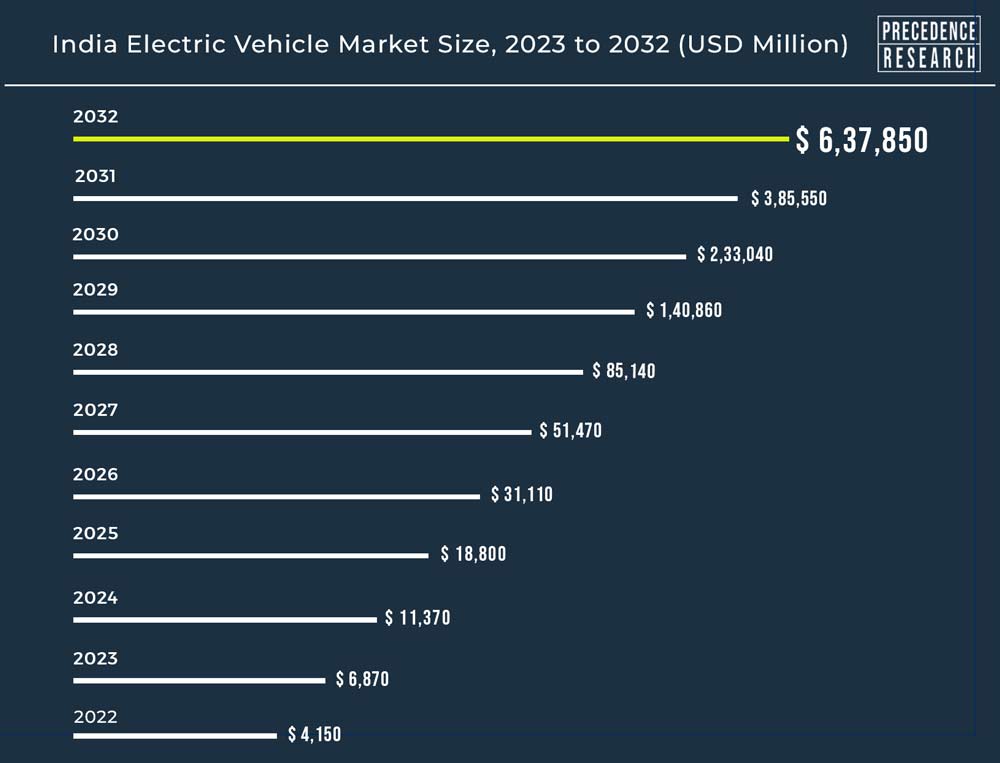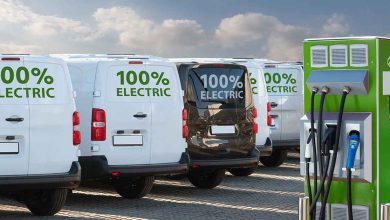India’s EV Market to Reach $637.85 billion by 2032

Ottawa, Aug. 08, 2023 (GLOBE NEWSWIRE) – The India electric vehicle market size was estimated at USD 4.15 billion in 2022.
Government incentive to promote EV in India
The Indian government had launched various initiatives and incentives to promote the adoption of electric vehicles. These measures included subsidies, tax incentives, and reduced goods and services tax (GST) rates on EVs. Growing public awareness of environmental issues and climate change has contributed to increased interest and acceptance of electric vehicles.
Report Highlights
- By propulsion, the battery electric vehicles segment holds the largest share of the EV market. Battery electric vehicles produce zero tailpipe emissions, making them an attractive choice for environmentally conscious consumers and governments aiming to reduce air pollution and combat climate change.
- By platform, the four-wheeler segment is expect to have a significant share of the market throughout the forecast period. Four-wheelers, particularly electric cars, have been more widely accepted and preferred by consumers for personal transportation. Consumers often associate four-wheelers with safety, comfort, and convenience, making them a popular choice for everyday use.
- By vehicle type, the passenger vehicle segment is observed to hold the dominating share of the market during the forecast period. The availability of a wide range of passenger vehicle models in the country by multiple nation-based automakers promotes the growth of the segment.
Growth Driver: Emphasis on reducing air pollution
Many Indian cities suffer from severe air pollution, especially during peak traffic hours. The increasing number of vehicles on the road is a major contributor to this problem. Promoting electric vehicles helps to improve urban air quality, making cities healthier and more livable for their residents. Additionally, Indian government has implemented regulations and policies to tackle air pollution, including emission norms for vehicles. Encouraging the adoption of electric vehicles aligns with these policies, and government agencies often provide financial incentives like subsidies, tax benefits, and reduced registration fees to promote EV usage. As people become more environmentally conscious, there is a growing interest in electric vehicles as a cleaner and more sustainable transportation option. Thus, the rising emphasis on reducing air pollution acts as a driver for the India electric vehicle market.
Restraint: Consumer affordability
Electric vehicles generally have higher upfront costs compared to traditional internal combustion engine vehicles. The cost of EV batteries, which is a major component of the vehicle’s price, remains relatively high. This price difference can be a deterrent for price-sensitive consumers, especially in a price-sensitive market like India. Many consumers in India rely on financing options to purchase vehicles. However, the availability of attractive and accessible financing options for electric vehicles is in limit, making it difficult for potential buyers to afford an EV without a substantial down payment. Thus, the consumer affordability factor creates a restraint for the market.
Opportunity: Rising development of domestic battery manufacturing plants
India is currently focuses on developing domestic battery production plants that will reduce dependence on foreign suppliers and enhance energy security. In this regard, domestic battery production plants enable economies of scale and mass production of batteries. As production volumes increase, the cost per unit decreases, thus making electric vehicles more price-competitive in the market. Furthermore, local battery production facilities allow for customization and innovation to meet the specific needs of the Indian market. By tailoring battery technology to suit regional requirements, manufacturers can lead to better-performing and more efficient electric vehicles. Consequently, all these factors collectively create a significant opportunity for the market.
Challenge: Inadequate policy implementation
Inconsistent or poorly implemented policies create uncertainty for electric vehicle manufacturers and investors. They may hesitate to make long-term commitments and investments in the EV sector if they are unsure about the government’s commitment to supporting the industry. When incentives and subsidies are not implemented effectively, they may not provide the desired boost to the EV market. Delays in disbursing incentives or limited accessibility can reduce the effectiveness of these measures in encouraging consumers to switch to electric vehicles. The success of EV policies also depends on consumer awareness and education. Inadequate efforts in promoting electric vehicles and their benefits can lead to limited public interest and slower adoption rates. Thus, the inadequate policy implementation is observed to create a challenge for the market.

